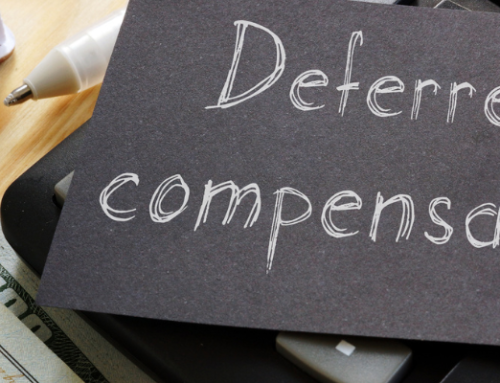A modern-day bank run wiped out the assets in Silicon Valley Bank (SVB) last week and put billions of dollars in deposits and credit lines at risk for companies in the U.S. and across the globe. It’s the biggest bank failure since 2008.
In this case, a few core issues seem to have collectively occurred at the wrong time: balance sheet mismanagement, an overly niched customer base, lack of risk management, and increasingly high interest rates. Even so, it can be difficult to predict a fallout of this magnitude.
All signs point to an isolated event, and CFOs – especially those outside of the Silicon Valley tech sector – need to remain calm and focused on core financial management fundamentals.
Main takeaways:
- The March 9 SVB bank run was largely the result of a mismatch of timing of maturities of short term customer deposits with long-term MBS securities.
- Above all, CFOs need to remain calm and focus on sound financial management practices.
- Tighter banking regulations and higher capital requirements may be on the horizon in the wake of the government bailout
SVB Collapse Timeline
How is it that a bank with billions of dollars in assets went under seemingly overnight?
This is a rough timeline of major events that led to SVB’s collapse.
- March 2020: SVB held $60 billion in deposits.
- March 2022: Deposits increased to $209 billion as a result of a boom in venture capital funding during the pandemic.
- During this time, the bank’s securities portfolio (mostly long-term mortgage-backed securities) increased from $27 billion to $128 billion. Though these securities are relatively safe, they also lose value when interest rates rise.
- December 2022: SVB’s securities portfolio unrealized losses, or the gap between what the investments cost and what they could be sold for at fair market value, increased to $17 billion, while deposits decreased to $173 billion. In other words, the gap increased but the value decreased.
- Wednesday, March 8: SVB publicly announced it lost around $2 billion and was unsuccessful in trying to raise capital.
- Though the CEO tried to reassure customers, but all it took was a few spooked customers posting to social media to start the bank run.
- Thursday, March 9: SVB customers withdrew $42 billion in deposits and remaining customers were unable to withdraw or access funds as the bank closed the day with a negative cash balance of $958 million.
- Friday, March 10: California Department of Financial Protection and Innovation closed SVB and appointed the FDIC as receiver; the FDIC created a bridge bank to transfer insured deposits.
- Monday, March 13: All remaining SVB depositors’ funds became available through the bridge bank.
Most smaller regional banks won’t have the same issues as SVB did. But it’s a wide-ranging lesson on diversification, risk management, and regulations. As more information emerges over the coming weeks and months, CFOs and other executives can take steps to shore up their companies.
The SVB Fallout: Considerations for CFOs
Even if a business doesn’t have direct exposure to the SVB collapse, there are still several considerations for current operations and future risk exposure.
In the short-term, certain vendors, like payroll, A/R, or A/P service providers may be tied to SVB and could be facing operational limitations. There could be delays in bill pay or reimbursements. Though these vendors would probably reach out if there would be any issues, businesses can also ask to be sure.
CFOs can always request to view a bank’s financial statements as part of due diligence; however, these statements may not reveal all the risks to the bank’s actual position.
It’s important to remember that even with all the right due diligence and risk management, there usually aren’t telltale signs that a bank is about to suffer a run on deposits and collapse.
With that in mind, the best approach is proactive financial management. A company’s best defense in any environment is a sound balance sheet.
This means:
- Meeting debt covenants and more alignment of maturities of assets and liabilities
- Maintaining strong ratios
- Managing capital requirements appropriately
- Retaining alternative banking relationships and access to capital
- Forging a positive relationship with bankers and seeking their counsel
The goal is to be a stronger borrower in case there are immediate needs to access capital or lines of credit.
A risk for some companies is during times of increased credit rationing. This is when banks pull back on credit. If a CFO can ensure their company is among a bank’s top customers, the company will be in a better position to obtain scarce credit.
It’s unhelpful to operate under fear that bank assets could be seized at any moment. Both too much and too little cash on hand can result in a mismanaged balance sheet. It is much less risky to optimize capital structure with the appropriate use of short-term, long-term and temporary capital facilities of both debt and equity components.
These are some of the other considerations for CFOs.
- Secure a credit line or insurance for bank deposits in excess of $250,000.
- In this case, the government bailed out all deposits at SVB, including amounts above the FDIC limit. This won’t always be the case. CFOs are encouraged to talk with their banking advisors about options.
- Spread out deposits among more than one bank.
- Many SVB depositors only banked with SVB. After the fallout, those same startups are talking about concentration risk.
- Regional banks and credit unions can be great options as they tend to have diversified holdings and local relationships.
- Diversify client and customer revenue so funds aren’t concentrated too heavily in one sector or with one client.
- Though one of the issues with SVB was that its depositors were all in the tech sector, it’s a good lesson for CFOs and executives to diversify their own revenue streams. CFOs’ roles have changed to focus less on historical record-keeping and more on future-proofing the business, and this is an area where financial executives can add value.
It’s also important to remember that it’s not uncommon for smaller or midsize regional banks to sell assets, raise capital, and occasionally run into liquidity issues. Usually, depositors don’t notice, and they remain unaffected. The dual factors of SVB customers being heavily niched in the same sector and social media proliferation greatly contributed to the collapse.
What to Expect Next
The future is murky, but there are a few things that CFOs and growing businesses can look for next.
- Banking regulations are likely to get tighter.
- In exchange for a bailout, regulations are expected to tighten as the federal government shores up more of the country’s financial institutions. Dodd-Frank was aimed more at larger institutions, and now some are arguing that this failure was a result of looser regulations on smaller banks.
- An investigation is already underway and shareholder lawsuits are already being filed. A report is expected within weeks.
- The other side of more stringent regulations is that the investigation could identify ways the Fed can better support banks of different sizes.
- Regional banks may be required to raise capital requirements.
- There is historical precedent for higher capital requirements; after the 2008 recession, the Fed and other regulators increased capital requirements. Even before the SVB crash, the federal government was already starting to examine whether capital lending rules should be revised. Initially, this review was aimed at larger banks, but that could be expanded to smaller banks now.
- Lending costs are likely to increase.
- If regulations are tighter and capital requirements are higher, banks would either need to decrease lending, increase consumer costs, or both.
- There’s also the question of how higher assessment fees for FDIC-insured banks could be passed on to consumers.
- With higher capital requirements, banks may need to “credit ration” to their strongest customers. Those that practice sound financial management.
Banks with FDIC insurance will be facing new and/or higher assessments as a result of the bailout. And while taxpayers won’t be directly responsible for losses under the bailout, FDIC-insured banks will likely pass on their higher costs to customers, in one way or another.
So while CFOs and business leaders may be unsure what to do next, the best course of action is to stay calm, stay the course, and continue to practice sound financial management.
Some companies may lack strategic financial oversight or may not have the need for a full-time CFO. In those cases, fractional CFO or finance and accounting outsourcing (FAO) services can fill the gap.
Whether your company is affected by the SVB fallout or you want to evaluate financial management processes and strategies, contact Brad Jones, CPA, CVA, CMA, CFF, leader of PBMares’ FAO service offering.




